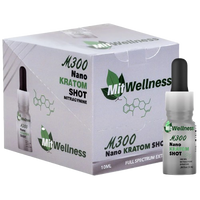 The pharmacology of Kratom is a multifaceted topic, and many studies have played a pivotal role in shedding light on its complexities. While Kratom’s potential therapeutic uses are intriguing, safety concerns and regulatory challenges persist. As research continues, it remains essential to consult reliable government sources and studies for a well-rounded understanding of Kratom’s pharmacology and implications for public health.
The pharmacology of Kratom is a multifaceted topic, and many studies have played a pivotal role in shedding light on its complexities. While Kratom’s potential therapeutic uses are intriguing, safety concerns and regulatory challenges persist. As research continues, it remains essential to consult reliable government sources and studies for a well-rounded understanding of Kratom’s pharmacology and implications for public health.
What is Kratom Pharmacology?
Kratom pharmacology is the scientific study of how Kratom, a plant native to Southeast Asia, interacts with the human body and its underlying mechanisms. Kratom contains various alkaloids, with mitragynine and 7-hydroxymitragynine being the most prominent, which interact with receptors in the brain and body, particularly the mu-receptors, adrenergic receptors, and serotonin receptors documented by Paula N. Brown.
Kratom’s metabolism involves the liver’s cytochrome P450 enzymes, primarily CYP2D6 and CYP3A4, which play a crucial role in processing Kratom compounds researched by WC Prozialeck. Understanding the pharmacokinetics of Kratom, including its absorption, distribution, metabolism, and elimination, is essential for comprehending its effects on the human body.
The bioavailability of Kratom, which is around 90% for oral ingestion, determines the proportion of the active compounds that enter the bloodstream, influencing the onset and intensity of its effects, according to Andrew C. Kruegel. Receptor affinity is another critical aspect, with mitragynine having a higher affinity for mu-receptors, contributing to its analgesic properties.
What are the key chemical constituents found in Kratom leaves?
The key chemical constituents found in Kratom are:
Mitragynine: Mitragynine is the most abundant alkaloid in Kratom and is primarily responsible for its drug-like effects. It acts as an agonist at mu-receptors in the brain, similar to the way drugs like morphine do. Mitragynine is also associated with Kratom’s stimulant properties at lower amounts.
7-Hydroxymitragynine: This alkaloid is another crucial component of Kratom’s effects. While it is present in smaller quantities compared to mitragynine, it has a higher affinity for mu-receptors. This makes it a potent analgesic and contributes significantly to Kratom’s overall relieving properties.
Speciogynine: Speciogynine is a minor alkaloid found in Kratom. It is believed to have muscle relaxant properties.
Paynantheine: This alkaloid is present in moderate amounts and is structurally related to mitragynine. Its specific effects are less well-documented compared to the two primary alkaloids.
Corynantheidine: Corynantheidine is another alkaloid found in Kratom, but its pharmacological effects are not as well understood as Mitragynine and 7-Hydroxymitragynine.
How does Kratom interact with receptors in the body?
Kratom interacts with receptors in the body, primarily through its key alkaloids, Mitragynine and 7-Hydroxymitragynine. The interaction of Kratom with receptors contributes to the wide range of effects it produces. Here’s how Kratom interacts with receptors:
Mu-receptors (MORs)
Mitragynine and 7-Hydroxymitragynine: These alkaloids in Kratom are partial agonists at mu-receptors in the brain. When they bind to these receptors, they can produce physical-relieving effects similar to traditional drugs. This is why Kratom is sometimes used for relief management.
Delta-receptors (DORs) and Kappa-receptors (KORs)
Mitragynine: Mitragynine also interacts with delta and kappa receptors, although its affinity for these receptors is lower compared to mu-receptors. These interactions may contribute to its analgesic and anti-nociceptive effects.
Adrenergic Receptors
Mitragynine: Mitragynine has stimulant properties at lower amounts, partly due to its interaction with alpha-2 adrenergic receptors. This interaction can lead to increased alertness and energy.
Serotonergic Receptors:
Mitragynine: Mitragynine’s interaction with serotonergic receptors can lead to mood-enhancing effects, making Kratom potentially useful for individuals seeking relief from mood disorders.
How does the serving size of Kratom impact its effects?
The serving size of Kratom can significantly impact the effects experienced by an individual. Kratom’s effects are amount-dependent, meaning that they vary depending on the amount consumed. Here’s how the serving size of Kratom can influence its effects:
Low Amounts (1-4 grams):
- Stimulation: At low amounts, Kratom tends to produce stimulating effects. Users may experience increased energy, alertness, and sociability.
- Enhanced Focus: Some individuals use low amounts of Kratom to improve focus and concentration.
Moderate Amounts (4-6 grams):
- Mood Enhancement: Moderate amounts of Kratom can lead to mood enhancement and a sense of well-being. Users may feel more positive and content.
- Physical Relief: Kratom’s analgesic (physical-relieving) properties become more pronounced at moderate amounts.
High Amounts (6 grams and above):
- Sedation and Physical Relief: High amounts of Kratom are more likely to induce sedative effects and significant physical relief. This is often referred to as the “sedative” or “relaxing” effect of Kratom.
- Possible Nausea: High amounts of Kratom can increase the likelihood of nausea and other adverse effects.
It’s essential to exercise caution when considering Kratom, as higher amounts can increase the risk of adverse effects, dependence, and potential withdrawal symptoms. It’s advisable to consult with a healthcare professional before using Kratom, especially if you have any underlying medical conditions or are taking other medications.
What happens to Kratom in the body during metabolism?
Kratom undergoes metabolism in the human body, primarily in the liver. When consumed, its active alkaloids, such as mitragynine and 7-hydroxymitragynine, are metabolized through a process called biotransformation. The liver enzymes, specifically the cytochrome P450 system, play a crucial role in breaking down these alkaloids into various metabolites, which are then further processed and eliminated from the body. This metabolism results in the conversion of kratom’s original compounds into forms that can be excreted through urine and feces. The metabolites produced during this process can have varying effects on the body, including potential psychoactive properties. However, the precise mechanisms and effects of these metabolites are still an active area of research and subject to individual variability.
How is kratom pharmacokinetically processed?
Kratom’s pharmacokinetic processing primarily involves gastrointestinal absorption of its active alkaloids, including mitragynine and 7-hydroxymitragynine, after ingestion. Following absorption, these compounds are distributed throughout the body, including the central nervous system, where they exert their effects. Metabolism primarily occurs in the liver, with cytochrome P450 2D6 (CYP2D6) playing a key role in converting mitragynine to 7-hydroxymitragynine. The elimination of kratom alkaloids takes place through urine and feces, with elimination half-lives varying but generally estimated to be around 24-39 hours for mitragynine. Nonetheless, the pharmacokinetics of kratom can be influenced by multiple factors, leading to individual variability in its effects and duration of action.
What are the primary pharmacological effects of Kratom?
The primary pharmacological effects of Kratom are attributed to its active alkaloids, particularly mitragynine and 7-hydroxymitragynine, which interact with the receptors in the brain. Kratom’s effects can vary depending on the amounts and strain, but generally include analgesia, drowsiness, and stimulation. At lower amounts, Kratom tends to produce stimulating effects, increasing alertness, sociability, and energy levels, while at higher amounts, it can lead to sedation, physical relief, and a sense of euphoria. Kratom’s complex pharmacology also involves interactions with adrenergic, serotonergic, and dopaminergic systems, contributing to its diverse range of effects. However, it’s important to note that Kratom’s safety and potential for addiction and withdrawal are subjects of ongoing research and debate, and its use should be approached with caution and moderation.
How does Tolerance apply to Kratom in the realm of Pharmacology?
Tolerance in the realm of pharmacology refers to the reduced effectiveness of a drug over time, requiring higher amounts to achieve the same desired effects. Kratom is known to exhibit tolerance, where regular and prolonged use can lead to diminished responses to its active alkaloids, particularly mitragynine and 7-hydroxymitragynine. This means that individuals who consume Kratom regularly may find that they need to increase their amount to achieve the same level of physical relief, euphoria, or other desired effects. Tolerance can develop relatively quickly with Kratom, and this phenomenon is one of the factors contributing to concerns about potential dependence and addiction associated with its long-term use. Consequently, responsible and cautious Kratom consumption is advisable to mitigate the development of tolerance and its potential consequences.
What is Cross-Tolerance in the context of Kratom’s Pharmacology?
Cross-tolerance in the context of Kratom’s pharmacology refers to the phenomenon where tolerance to Kratom’s effects extends to other substances or drugs that share similar mechanisms of action or receptor pathways. For example, individuals who have developed tolerance to the drug-like effects of Kratom, which primarily involve mu-opioid receptor activity, may also exhibit reduced sensitivity to other drugs like prescription medications. This occurs because the body’s tolerance mechanisms can become more generalized, affecting a broader range of substances that interact with the same receptors or pathways. Cross-tolerance underscores the importance of caution when using Kratom, as it can potentially impact an individual’s response to other medications or substances, leading to altered therapeutic effects and safety concerns.
How does Withdrawal relate to Kratom’s Pharmacology?
Withdrawal related to Kratom’s pharmacology refers to the set of physical and psychological symptoms that individuals may experience when they abruptly reduce their Kratom intake after prolonged and regular use. Kratom withdrawal symptoms can include irritability, muscle aches, nausea, diarrhea, and cravings for the drug. These symptoms are largely attributed to the development of physical dependence, as Kratom’s active alkaloids, such as mitragynine and 7-hydroxymitragynine, interact with receptors in the brain. When Kratom use is stopped, the sudden absence of these compounds can lead to dysregulation of neurotransmitter systems, resulting in withdrawal symptoms. The severity and duration of Kratom withdrawal can vary among individuals and depend on factors such as serving size, frequency of use, and overall duration of Kratom consumption. It is essential for individuals considering Kratom use to be aware of the potential for dependence and withdrawal and to use the substance responsibly and with caution.
How do Drug Interactions influence Kratom’s Pharmacology?
Drug interactions can significantly influence Kratom’s pharmacology by altering how its active compounds, such as mitragynine and 7-hydroxymitragynine, are metabolized and how they affect the body. Kratom can interact with various medications and substances, particularly those that affect the same liver enzymes responsible for its metabolism, such as the cytochrome P450 system. When Kratom is taken alongside other substances that inhibit or induce these enzymes, it can lead to unpredictable changes in its potency and duration of action. Inhibitors may increase Kratom’s effects, potentially leading to toxicity, while inducers may reduce its effectiveness. Additionally, Kratom’s interactions with other drugs can impact their pharmacokinetics and pharmacodynamics, potentially resulting in adverse effects or reduced therapeutic benefits. Therefore, individuals who use Kratom and take other medications should be cautious and consult with healthcare professionals to understand and manage potential drug interactions effectively.
What are the Safety Concerns associated with Kratom in terms of Pharmacology?
Safety concerns associated with Kratom in terms of pharmacology primarily revolve around its potential for dependence, addiction, and adverse health effects. Kratom’s active alkaloids, mitragynine and 7-hydroxymitragynine, interact with receptors in the brain, leading to the risk of developing tolerance and physical dependence with prolonged use. Abrupt cessation of Kratom can result in withdrawal symptoms. Moreover, Kratom products on the market are often of uncertain quality and may be contaminated with other substances, posing additional health risks. Furthermore, there have been reports of adverse effects associated with Kratom use, including hepatotoxicity, cardiovascular issues, and psychiatric symptoms. Due to its relatively unregulated status, varying potency, and potential for interactions with other drugs, Kratom should be approached with caution, and individuals considering its use should be well-informed about these safety concerns and consult with healthcare professionals when necessary.
What is the Therapeutic Potential of Kratom’s Pharmacology?
Kratom has been explored for its potential therapeutic applications within the realm of pharmacology, primarily due to its interactions with receptors and other neurotransmitter systems. Some individuals have reported using Kratom for relief management, drug withdrawal symptom relief, and mood enhancement. Its active alkaloids, such as mitragynine, exhibit analgesic properties that may provide relief. However, while anecdotal evidence suggests therapeutic potential, more rigorous scientific research is needed to establish the safety and efficacy of Kratom for various medical conditions. Additionally, concerns about addiction, dependence, and potential adverse effects underscore the importance of further investigation and cautious use in any potential therapeutic context.
What are the Side Effects of Kratom in the context of Pharmacology?
Kratom, in the context of pharmacology, is associated with a range of side effects. These can include nausea, vomiting, dry mouth, constipation, and dizziness, which are often reported at lower amounts. At higher amounts or with prolonged use, more concerning side effects may emerge, such as drowsiness, increased heart rate, and high blood pressure. Kratom’s potential for dependence and withdrawal symptoms is another critical consideration, as abrupt cessation of its use can lead to irritability and muscle aches. Additionally, there have been reports of hepatotoxicity and adverse psychiatric effects, including psychosis and mood disturbances, although the exact mechanisms behind these side effects remain under investigation. The variability of Kratom products on the market and the lack of standardized regulation make it crucial for individuals to exercise caution and be aware of these potential side effects when using Kratom.
What are the Research Challenges in Understanding Kratom’s Pharmacology?
Understanding Kratom’s pharmacology presents several research challenges. Firstly, the variability in Kratom products available on the market, including varying strains and preparation methods, makes it challenging to establish consistent serving sizes and chemical composition for research purposes. Additionally, limited funding and regulatory hurdles have hindered large-scale, controlled clinical trials, which are essential for assessing its safety and efficacy. The complex interplay of Kratom’s active alkaloids with multiple neurotransmitter systems, adrenergic, serotonergic, and dopaminergic pathways, requires comprehensive investigation to unravel its mechanisms of action and potential therapeutic effects. Furthermore, the long-term consequences of Kratom use, including the risk of addiction, withdrawal, and adverse health effects, remain subjects of ongoing study. Lastly, ethical considerations surround Kratom research, given its potential for abuse and addiction. These challenges underscore the need for rigorous and multidisciplinary research efforts to provide a more comprehensive understanding of Kratom’s pharmacology and its effects on human health.
What do Clinical Studies reveal about Kratom in the field of Pharmacology?
Clinical studies on Kratom in the field of pharmacology are limited but have provided some insights into its effects. While there is anecdotal evidence suggesting potential benefits for relief management and drug withdrawal, the available clinical research is often small in scale and lacks rigorous methodology, making it challenging to draw definitive conclusions. Some studies have reported the analgesic properties of Kratom’s active compounds, effective for physical relief. However, concerns about dependence, addiction, and adverse effects have also emerged in clinical research. Moreover, the variability in Kratom products and the lack of standardized serving sizes further complicate the interpretation of clinical findings. Overall, while clinical studies have shed light on some aspects of Kratom’s pharmacology, more comprehensive and well-designed research is needed to better understand its safety, efficacy, and potential therapeutic applications.





















